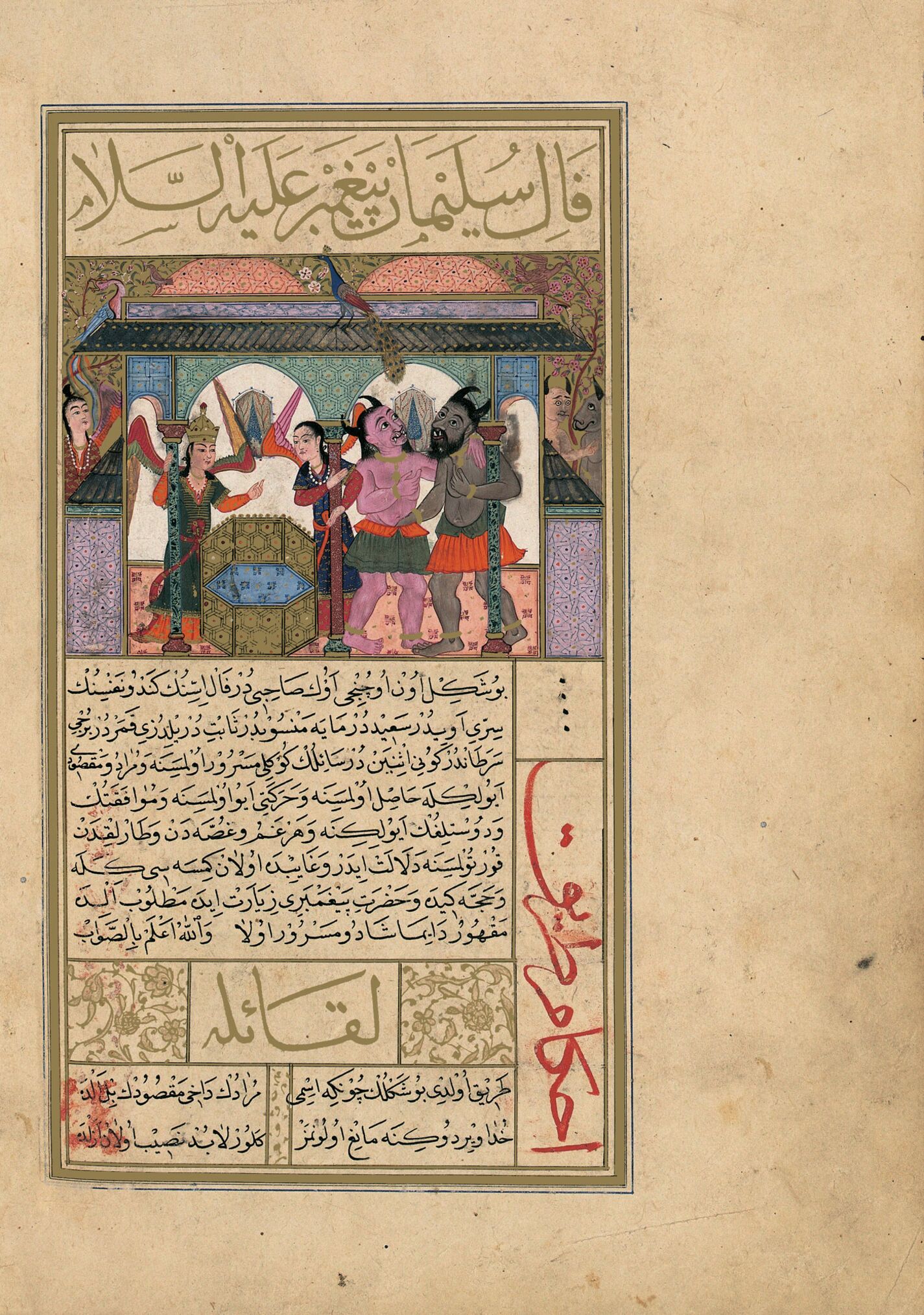The only illustration in this section featuring figures represents the House of Sulayman, or the Prophet Solomon. In the Qur'an, Sulayman is the son of Dawud (David, see f. 129v), who passed on to him his ability to gather all kinds of animals, after which Allah gave him power over all creatures, including the jinns. He was particularly known as a prophet of wisdom and fair, or “Solomonic”, judgment. His vast kingdom included Yemen and the best known story about his life reported in the Qur’an refers to his relationship with Bilqis, the Queen of Sheba, who converted from being a sun worshipper and eventually married Sulayman.
The building and especially the garden behind, have become of secondary importance in this illustration, which is dominated by the presence of two winged angels and two horned jinns who have their arms wrapped around the slender marble columns that support the arched entrance to Sulayman’s throne room. The prophet’s hexagonal throne is visible between the two angels who are guarding it, although there is no trace of Sulayman himself. The busts of another angel and of two jinns can be seen peering out on either side behind the building. Four birds, including a peacock and a
simurgh or phoenix, are perched or fly above the roof, symbolizing Sulayman’s relationship and power over all living creatures. Above the throne room, which occupies most of the pictorial space, are a sloped roof and two low tiled domes, and shorter extensions of the throne room fill the remaining space on either side.
Stefano Carboni
The Metropolitan Museum of Art
Curatorial Assistant in Islamic Art
(Fragment of the
Book of Felicity commentary volume)
